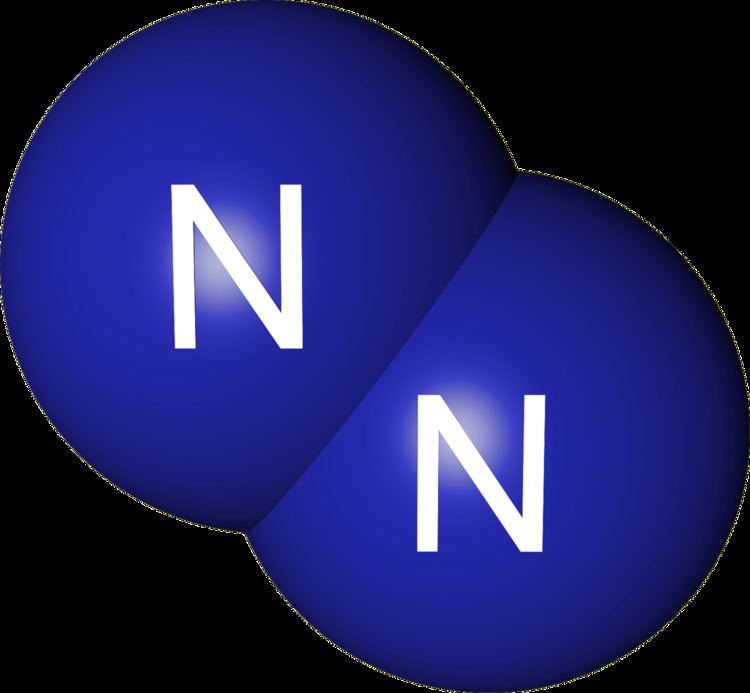 | ||
A contact explosive is a chemical substance that explodes violently when it is exposed to a relatively small amount of energy (friction, pressure, sound, light). Though different substances have varying amounts of energy sensitivity, they are all much more sensitive relative to other explosives. Contact explosives are a part of a group of explosives called primary explosives which are also very sensitive to stimuli but not to the degree of contact explosives. The extreme sensitivity of contact explosives is due to either its composition, bonds, or structure.
Contents
Types
These are some common contact explosives.
Presence of Nitrogen
Explosives that are nitrogen-based are incredibly volatile due to the stability of nitrogen in its diatomic state, N2. Most organic explosives are explosive because they contain nitrogen. They are defined as nitro compounds.
Since nitrogen wants to escape the unstable bonds it has in a big compound so that it can form its highly stable N2 form, it makes the compound sensitive to exploding. The presence of nitrogen in these explosives also makes them much more powerful. The triple bond that holds N2 together has an incredible amount of bond energy that when it forms it releases the nitrogen gas at high energies over a short period of time thus creating a huge explosion.
Oxidizer and Fuel
Some contact explosives contain an oxidizer and a fuel in their composition. Chemicals like gasoline, a fuel, burn instead of explode because they must come into contact with oxygen in the combustion reaction. However, if the compound already contains both the oxidant and fuel, it produces a much faster and violent reaction.
Bonds and Structure
The structures and bonds that make up a contact explosive contribute to its instability. Covalent compounds that have a large unequal sharing of electrons have the capability to fall apart very easily and explosively. Nitrogen triiodide is a perfect example of this property. The three huge iodine molecules try to attach themselves to one small nitrogen ion, which means that the atoms are holding on to each other through a very weak bond. The weak bond between each atom is like a thread just waiting to break. Therefore, any small amount of applied energy cuts this thread and releases the large amount of energy that was needed to keep it intact.
The shape of the contact explosive molecule plays a role in its instability as well. Using nitrogen triiodide as an example again, its pyramidal shape forces the three iodine molecules to be incredibly close to each other. The shape further strains the already weak bonds that holds together this molecule.
Uses
Contact explosives are used in a variety of fields.
Military
Militaries use a variety of contact explosives in combat. Some can be manufactured into different types of bombs, tactical grenades, and even explosive bullets. Dry picric acid, which is more powerful than TNT, was used in blasting charges and artillery shells. A lot of contact explosives are used in detonators. For explosives that use secondary explosives, contact explosives are used in the detonators to set off an energy chain reaction that will eventually set off the secondary explosive.
Compounds like lead azide are used to manufacture bullets that explode into shrapnel on impact.
Flash powders are used in a variety of military and police tactical pyrotechnics. Stun grenades, flash bangs, and flares all use flash powder to create bright flashing lights and loud noise that disorients the enemy.
On the other hand, many of these cheap, volatile contact explosives are also used in improvised explosive devices(IED) created by terrorists and suicide bombers. For example, acetone peroxide passes through explosive detectors and is incredibly powerful, unstable, and deadly. Evidence for the instability of these IEDs lies in the multiple reports of premature or wrongful IED explosions. However, when these explosives are used correctly, they have devastating consequences. The July 7th 2005 London bombings, the 2015 Paris attacks, and the 2016 Brussels bombings all used explosives that contained acetone peroxide.
Medicine
Angina pectoris, an unfortunate symptom of Ischaemic heart disease, is treated with nitroglycerin. Nitroglycerin is known as a vasodilator. Vasodilators work by relaxing the heart's blood vessels so the heart does not need to work as hard. Picric acid specifically has been used for burn treatment and as an Antiseptic.
Theatrical/Fireworks
The same flash powder used for military tactical pyrotechnics can also be used for several theatrical special effects. They are used to produce loud, bright flashes of light for effect. Though some flash powders are too volatile and dangerous to by used, there are milder compounds that are still incorporated into performances today.
Silver Fulminate is used to make noise-makers, small contact poppers, and several other novelty fireworks. It is most widely used in bang snaps. In these small explosives, a minuscule amount of silver fulminate is encased in gravel and cigarette paper. Even with this small amount of silver fulminate, it produces a loud, sharp bang.
